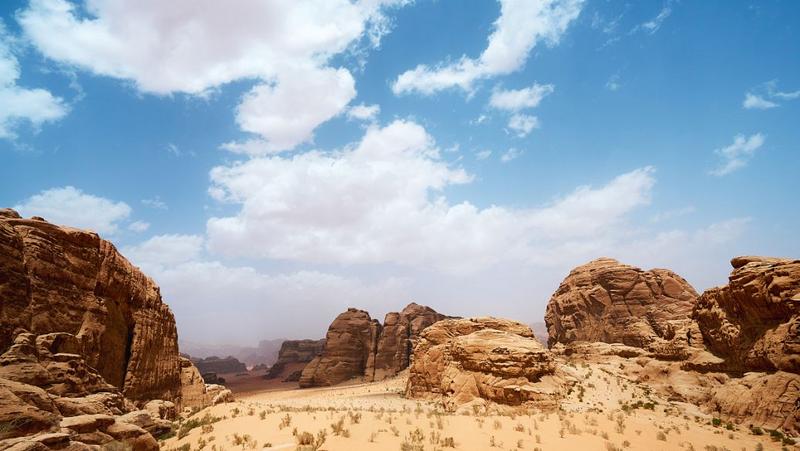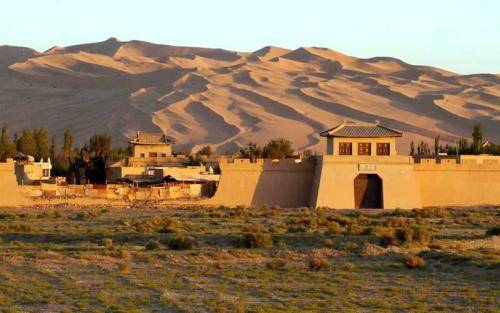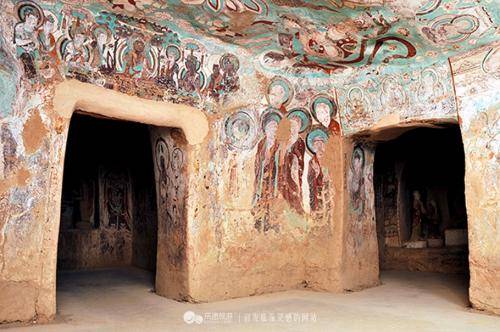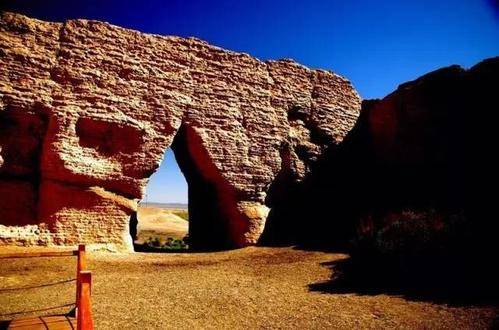Dunhuang Ancient City is a 'fake' ancient city and a 'real' film set. In the 1980s, Japanese director Junya Sato built this film set for the movie 'Dunhuang'. After filming was completed, the Japanese intended to dismantle it, but the local government decided to preserve it. To this day, many movies and TV series still come here for filming.
Mogao Caves, also known as the Thousand Buddha Caves, are located to the west of Mogao Caves, hence the name Western Thousand Buddha Caves. The Western Thousand Buddha Caves have only 16 caves, much smaller than Mogao Caves, but they might have been excavated even earlier than Mogao Caves. The visiting mode of the Western Thousand Buddha Caves is the same as that of Mogao Caves, led by a guide. Here, you can visit 5 caves, and the ticket price is one-fifth of that of Mogao Caves. The exquisite nature of the caves is not inferior to that of Mogao Caves.
Yangguan
"I urge you to drink another cup of wine, for once you go west out of Yangguan, there will be no old friends." The Yangguan mentioned here is this place. Because it is located south of Yumenguan, Emperor Wu of Han named this pass 'Yangguan'. It has always been the gateway to the Western Regions, but gradually declined after the Song Dynasty. Based on this poem by Wang Wei, people of the time composed the piece 'Yangguan Sandie'. The score was lost around the Song Dynasty, and the version of this timeless classic we hear today is from the Ming Dynasty.
Yumen Pass
'Why should the Qiang flute complain about the willows, when the spring breeze does not pass through Yumen Pass?' This Yumen Pass is named because jade from Kunlun Mountains entered the Central Plains through here. Yumen Pass is commonly known as Xiaofangpancheng, which looks like a small square block from a distance. The British archaeologist Stein unearthed documents here and confirmed that this is Yumen Pass.
Devil's City
Yadan originates from the Uyghur language, meaning 'steep earth mounds'. It is a type of wind-eroded landform formed in arid regions, creating particularly unique shapes under the influence of the wind. Some resemble golden lions, some resemble the Sphinx, some resemble castles, and some resemble peacocks. It is truly a masterpiece of nature. It took hundreds of thousands of years of wind and sun to form today's spectacular scenery. When viewing, keep a little distance to avoid human impact as much as possible.
Xiqianfo Cave Stargazing in the Gobi Desert
The sky darkens quickly, and there is no light pollution in the Gobi Desert. You can see a sky full of stars through the car window. The car stopped near Xiqianfo Cave, which is the last item on the itinerary, to enjoy the stargazing in the Gobi Desert.















